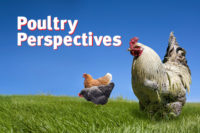Atlanta is known for its hospitality and its changeable weather. This year, one week out from the start of the International Production & Processing Expo, all of the weather forecasts were favorable.
All held true until the afternoon of the first day of the show, when a small amount of snow — and the decision from the local and state officials to close all schools and government offices at exactly the same time — created the mother of all traffic jams. The epic traffic gridlock (many were stuck in their cars for over 20 hours) and the mass cancellation of flights dramatically impacted both those planning to come to the IPPE and those who were already in town.
All in all, however, the show was a success. Attendees took the inconveniences in stride. What was shaping up to be a historic attendance of over 28,000 got shaved down to an estimated 24,000.
Many of the attendees planning to drive in did not make it (including buses bringing in more than 300 poultry growers and line personnel from Georgia and Alabama complexes). Fortunately, many in management had come in Monday and early Tuesday morning. Plus, the vast majority of the international visitors had come to Atlanta prior to the show and was there for the duration.
The show had the most-international look of any in recent years. More than 5,400 visitors from outside of the United States traveled to IPPE to see the latest in technology from more than 1,150 exhibitors, and to take part in a wide variety of educational opportunities.
As the meat industry continues to grow, with emerging countries gaining better access to animal protein, one needs to sit back and evaluate where the potential for growth is in terms of domestic demand and the ability to be self-sustaining in production.
The United States and Europe have demographic profiles and regulatory environments that place them in the “mature” status. Taking a look at information gathered from USDA/FAS, the winners and losers (where potential for growth is measured) become more evident. (*Visit http://bit.ly/0314NPtable to see the data.)
As one looks to the future, Asia, by far, is the region with greatest potential for growth. India, Southeast Asia and even China are areas with populations gaining purchasing power for upgrading diets.
As show organizers, not only are we seeing the potential of Asia, we are seeing more and more interest coming out of Africa. If the religious and political turmoil in the region can be tamed, Africa offers vast potential.




Report Abusive Comment